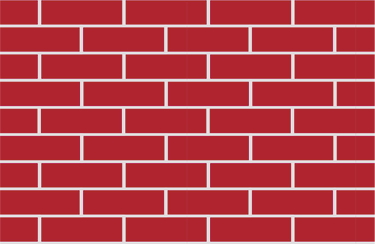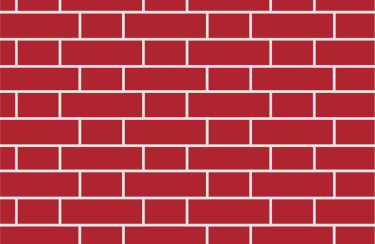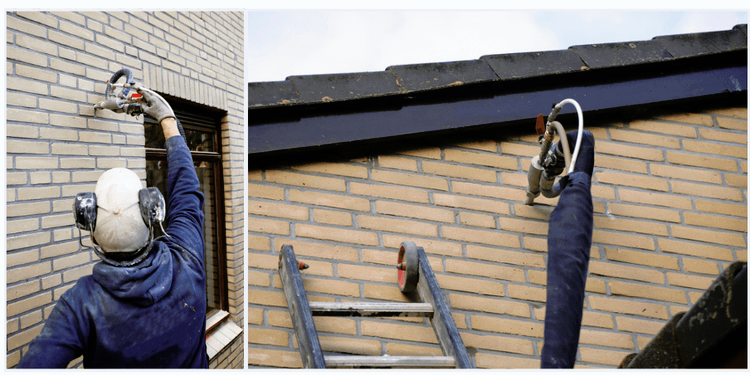Cavity wall insulation: what you need to know
Sky-high energy bills and rooms that never quite warm up often point to a hidden culprit – the empty cavity inside your external walls. Since the 1920s, most properties are constructed with a twin layer of bricks separated by a slim void. Installing cavity wall insulation will help keep your bills lower, reduce your carbon footprint, and create a warm, comfortable home, especially when part of a comprehensive whole-house insulation project.
How does a cavity wall save heat?
Having an outer and an inner wall, separated by a narrow air gap, slows the escape of heat by forcing it to cross two layers of masonry and a section of still air. However, filling it with cavity wall insulation substantially reduces the heat loss. Insulation can be installed at the point of construction or retrofitted to make your home more energy efficient.
How to tell if you have cavity walls

Cavity wall construction
If your home was built after the 1920's and has bricks that are laid with the longer edge (or 'stretcher') facing out, it is likely to have a double-leaf construction with a cavity in between.

Solid wall construction
If your home was built in the 1920's or earlier, it's likely to have a single-leaf, solid wall contruction. A tell tale sign is bricks layed with the short-side (or 'header') facing outwards.
Cavity wall insulation and the whole-house approach
A fabric-first, whole-house approach to energy efficiency means tackling the easiest wins first. In this case, blocking draughts around doors and windows and installing at least 270 mm of loft insulation are the logical first steps. Homes without draught-proofing can lose up to 20% of their heat from inefficient windows and doors, while loft insulation can prevent around 25% of your home’s heat from escaping.
Cavity wall insulation is the next logical step, as around 35% of heat is lost through walls. For a typical semi-detached home, insulation can save you up to £240 annually, according to Energy Saving Trust.
Adding an extension or loft conversion is the perfect time to fill empty wall cavities. Your builders and scaffolding are already on-site, you’ll soon be heating a bigger area, and the insulation cost can simply roll into the overall project budget instead of becoming a separate spend later.
Cavity wall insulation types
When it comes to types of cavity wall insulation, you’ve got several options, each balancing cost, performance and practicality.
- Blown mineral fibre: Non-combustible, easy to install and the cheapest per m², mineral fibre is the most popular choice.
- EPS or bonded polystyrene beads: The beads flow easily around obstacles and deliver a slightly better performance than the mineral fibre at a modest premium. If the cavity ever gets wet, they have the advantage of drying quickly.
- Cellulose (recycled paper) fibre: Blown in at high density, cellulose fibre locks carbon away and boasts excellent eco credentials. It absorbs and releases moisture, so it may not be suitable if your home is prone to damp.
- Loose hemp fibre: This sustainable plant-based loose fill offers low embodied energy and excellent moisture buffering. Its popularity is growing in the UK.
- Expanded foam: While expanded foam is quick and easy to install, it has several drawbacks. Over time, it can break down or shrink, leading to inefficient insulation and poor ventilation, while its lack of breathability can lead to damp problems. Many mortgage companies refuse to lend on homes that have expanded foam installed in lofts due to this concern, according to HomeOwners Alliance. Foam insulation is also very challenging to remove.

How to install cavity wall insulation
Installing cavity wall insulation is a job for the professionals. An experienced installer will have access to specialised equipment, be knowledgeable enough to avoid any pitfalls, and ensure your home insurance is unimpacted.
FMB members are vetted, monitored, and inspected to ensure they measure up to our high standards of workmanship, giving you peace of mind when planning your cavity wall project.
The installer surveys the wall for damage or moisture before drilling 25 mm holes roughly 1 m apart in the external walls. The insulation material is blown in until the cavity is full, and then the holes are plugged to retain the material and keep the wall’s integrity intact.
Removing cavity wall insulation
Removing failed cavity wall insulation is a messy, time-consuming, and expensive process that requires professional expertise. Once the access holes are drilled, high-powered vacuums or compressed-air rigs are used to suck away the material. In more challenging scenarios, bricks may need to be removed. However, removal is essential when damp, voids, or the wrong materials are causing cold spots or mould.
The cost of cavity wall insulation
Although the cost of installing cavity wall insulation will vary, generally expect to pay around £2,700 for a typical semi-detached property, with costs reflecting wall area and the insulation material. This makes it one of the more affordable whole-house upgrades, and one that will pay for itself in six to ten years through reduced heating bills.
Pitfalls of a poor cavity wall installation
Skipped surveys, the wrong material, or a rushed, unprofessional drill-and-fill can turn a money-saving upgrade into an expensive nightmare, so it’s crucial to know what pitfalls to avoid.
- If you notice dark tide marks, peeling paint, or a musty smell on your wall, it could be an indication of damp.
- Voids and gaps in the insulation material can manifest in cold spots, condensation, or mould in those areas.
- Rising bills may be a sign that your insulation needs to be replaced or topped up due to shrinkage or settling.
- If you’re experiencing window condensation and stale indoor air, your installer might have blocked your air vents.
Professionally installed cavity wall insulation allows you to enjoy lower bills, cosier rooms, and a smaller carbon footprint for decades to come. Find out about more ways to make your home more energy efficient with our ultimate guide to house insulation.
Read more about energy efficiency in the home



